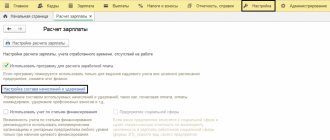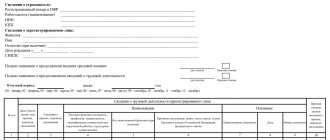What is included in sewerage services
The main utilities necessary for comfortable living are water supply and sanitation.
In accordance with Government Decree No. 354, which regulates the rules for the provision of public utilities, water supply is the preparation and supply of cold and hot water to residential premises.
Preparation refers to heating (for hot water) and chlorination (for cold water), and supply refers to transporting water to the consumer.
Water disposal is the reverse procedure to water supply. This service includes:
- removal of water through sewer networks after use by consumers;
- transportation of wastewater to urban (rural, township, etc.) treatment facilities;
- purification of wastewater from existing types of pollutants;
- disposal of contaminants;
- removal of previously treated wastewater.
Water supply and sewerage services are provided by various companies, which leads to the presence of several lines in payment receipts.
The concept of wastewater disposal from the point of view of legislation
The need to pay for sewerage, including this concept itself, is determined by government decree No. 354, signed in May 2011 and defining the procedure for providing public services to the population. Read resolution No. 354 .
According to this document, wastewater services involve payment for disposal, collection, delivery of used water to treatment facilities, and cleaning.
Many consumers mistakenly assume that wastewater disposal is an integral part of water supply services. Water disposal involves performing the following operations:
- removal of wastewater along with sewage from the apartment and house;
- removal of wastewater beyond the boundaries of the populated area, with delivery to treatment facilities;
- wastewater treatment with filtration and waste disposal.
The presented list implies that it is not enough to remove the water from the house. It is subject to cleaning and subsequent use.
The funds received for payment for these services are spent by the management company for the following purposes:
- ensuring proper technical condition of sewer systems;
- repair and maintenance of water structures;
- functioning of cleaning complexes;
- disposal of waste generated during wastewater treatment.
To ensure financing of the listed works, a fee is charged to the consumer.
We recommend: Where and how you can find out the serial number of your water meter
Performers and consumers
Any public service, including sewerage, has its own performers and consumers. The contractor is a legal entity (regardless of its legal form) or an individual entrepreneur who provides drainage services. In most regions of the Russian Federation, water disposal is carried out by the local water utility.
A consumer is the owner of a residential building, industrial premises, apartment in an apartment building, who consumes the service provided.
A service agreement must be concluded between the contractor and the consumer. In most cases, direct calculations are made in the presence of an HOA or other form of management of a residential building.
If the house belongs to a certain management company, then it acts as an intermediary between the contractor and the consumer. In this situation, you do not need to enter into a service agreement yourself.
If the contractor is a management company/homeowners association/housing cooperative
MA/HOA/housing cooperatives that provide utility services to consumers in apartment buildings (this service can also be correctly called “sewage”), in accordance with Rules 124, are required to pay to the appropriate RSO for the utility resource purchased for the purpose of providing utility services for sewerage.
If there is no sewerage control center in the house and there is a water supply control center for hot water supply and hot water supply, the volume of the specified communal resource is determined in accordance with subparagraph “c(4)” of paragraph 21 of Rules 124 (the volume of drainage of the entire apartment building is equal to the sum of the volumes of hot and cold water supply).
In such a situation, as indicated earlier, in the presence of such components of “housing maintenance” as hot water supply at SOI and cold water supply at SOI, a certain amount of “water disposal at SOI” arises, the actual cost of which cannot be presented for payment to the owners of the premises.
If the government authorities of the subject have approved the consumption standard for “sewage disposal at SOI”, then the management unit/homeowners association/housing cooperative has the right to present the specified utility resource for payment to consumers in the amount of the approved consumption standard. Excess consumption of the management company/homeowners' association/housing association is required to be paid to the RNO at its own expense, that is, the cost of such excess volume is a loss for the management company/homeowners' association/housing association.
If the region has not approved the consumption standard for “water disposal at SOI” (that is, the standard is zero), the management company/homeowners association/housing cooperative is required to pay to the RNO the entire volume of the specified communal resource at its own expense.
In this case, it seems correct to appeal to the court the inaction of the government authorities of the relevant constituent entity of the Russian Federation, which did not approve the consumption standard for “water disposal at SOI”, which led to losses to the management company/homeowners association/housing cooperative (damage caused by regulatory influence), with a demand for compensation from the budget of the relevant losses to pay for “water disposal at SOI”.
In addition, the management association/homeowners association/housing cooperative may initiate a general meeting of premises owners (hereinafter referred to as the GSM), including on the agenda the issue of concluding an agreement for sewerage between the owners of the apartment building premises and the RSO (the so-called “ direct agreement ”). If the owners decide to enter into a sewerage contract directly with the RSO, the settlement procedure between the RSO and the UO/HOA/housing cooperative will change, and the formula provided for in subparagraph “c(4)” of paragraph 21 of Rule 124 will not be applicable.
Tariffs in Moscow and St. Petersburg
Payment for services provided is determined on the basis of tariffs approved by regional legislative acts.
The provider of sewerage services in Moscow is Mosvodokanal JSC, which, in accordance with the legislation of the region, has established the following tariffs for 2021:
| Consumer | Cost, rub. per m³ for the period of consumption: | |
| 01.01.2019 – 30.06.2019 | 01.07.2019 – 31.12.2019 | |
| City population | 27,47 | 29,57 |
| Other consumers | 22,89 | 24,64 |
| Organizations ensuring the operation of water utilities | 19,84 | 20,75 |
Water supply and sanitation in the northern capital is handled by the State Unitary Enterprise Vodokanal of St. Petersburg. The cost of services provided is calculated based on the following tariffs:
| Consumer | Cost, rub. per m³ for the period of consumption: | |
| 01.01.2019 – 30.06.2019 | 01.07.2019 – 31.12.2019 | |
| City population | 30,60 | 32,75 |
| Other consumers | 40,28 | 43,50 |
| Organizations ensuring the operation of water utilities | 22,50 | 27,29 |
| For storm drainage | 24,62 | 26,62 |
How is the payment amount calculated?
There are two ways to calculate the final cost of sewerage:
- according to meters that determine the amount of cold and hot water consumption;
- according to standards established for individual consumption.
In the first situation, to calculate the cost you need to use the following formula:
C = (RHL + RGV)*T, where
| WITH | Cost of the service for a certain period |
| RHL | Cold water consumption according to meter readings for the same period of time |
| RGV | Hot water consumption according to the meter for the same period |
| T | Current tariff |
For example, the owner of an apartment in an apartment building located in Moscow consumed 8 m³ of cold water and 5 m³ of hot water in January 2021. For drainage in January you will have to pay (8+5)*27.47 = 357 rubles 11 kopecks.
Calculation according to consumption standards is carried out if:
- The consumer does not have individual metering devices installed;
- The meter verification period has expired for more than 6 months;
- The consumer does not pay for services and does not report meter readings.
Consumption standards are determined for each region individually and depend on:
- on the form of ownership of real estate;
- on the type of use of the property;
- on the area or number of people living in a separate room.
In this situation, utility services calculate using the following formula:
C = (Hx+Hg)*T, where
| WITH | Price |
| T | Rate |
| Nx | Cold water consumption rate |
| Ng | Hot water consumption rate |
For example, the following water supply standards apply to a one-room apartment with one resident located in St. Petersburg:
Hx = 15 m³;
Ng = 7 m³.
The fee for sewerage in January 2021 will be (15+7)*30.60 = 673 rubles 20 kopecks.
In addition to the amount of water consumed and current tariffs, the amount of payment for housing and communal services, including sanitation, may be influenced by the availability of benefits valid in the region of residence of the property owner.
As a rule, benefits apply to the following categories of citizens:
- WWII participants;
- disabled people of groups I and II;
- Chernobyl victims;
- large families;
- low-income families.
The benefit amount can vary from 25% to 100%.
For example, in Moscow, WWII veterans are provided with a 50% discount on sanitation. Under these conditions, the fee for sewerage, subject to a total water consumption of 13 m³, will be 357.11/2 = 178 rubles 56 kopecks.
Methods to reduce the amount for sewerage
Often, management companies unreasonably inflate the amount of payment for sewerage services. To eliminate such situations and protect their rights, consumers need to resort to the following actions:
- regularly monitor the amount presented for payment;
- in case of discrepancies, contact the management company and request a recalculation;
- install individual metering devices if they have not been used;
- minimize resource consumption by resorting to traditional methods of saving.
We recommend: Why water or electricity meters spin in the opposite direction
There are numerous sites on the Internet that offer the ability to calculate the amount of payment for sewerage. Special calculators have been developed. The user just needs to log into the site, enter the amount of resources consumed and indicate the region to receive the final amount to be paid.
An independent calculation is also possible using the above formula.
Why is there more water supply in the receipt?
The question often arises among the population why the drainage graph and the water supply graph reflect different information.
There may be several reasons:
- the sewer network of the house carries away not only wastewater from consumers, but also wastewater from storm sewers;
- Sewage fees are charged based on general household needs. When the needs of the house are included, the cost is additionally calculated using metering devices installed in the apartment building and then redistributed among consumers.
If payment for housing and communal services, including sewerage, is not made on time, then the organization providing the service has the right to charge penalties and collect the debt in court, which will lead to an increase in the amount of payment.
What is sewerage in a housing and communal services receipt?
Are drainage and sewerage the same thing?
Government Decree No. 354 is a document that gives a clear explanation of the concept of wastewater disposal.
The document was released in 2011. The compilers indicate that the term includes a whole range of measures, the main goal of which is to free residential premises from domestic wastewater.
To resolve the issue, a special connecting network is used. The operation is available to all consumers of public utility resources.
Regulating direction and setting restrictions is a task for government authorities. References to a number of other regulatory documents are acceptable:
- Resolutions, recommendations from local governments.
- Local rules issued by the water utility and other structures related to wastewater disposal.
- Regional regulations, provisions. Based on them, the total amount to be paid is calculated.
- Government Resolutions that mention housing and communal services.









